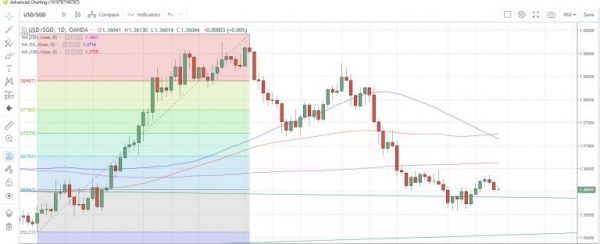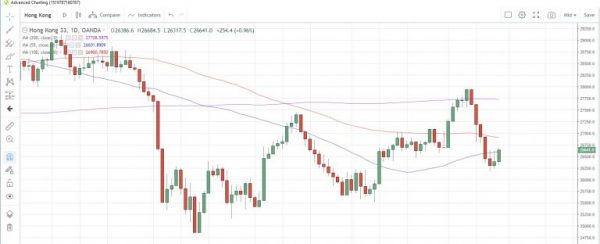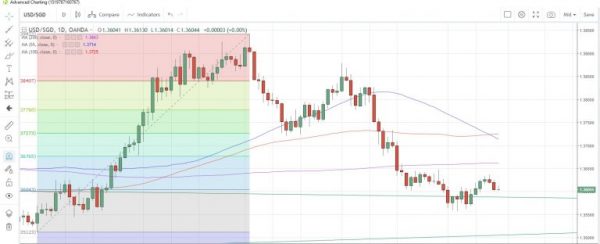Singapore exports fall for second month
Another Asian nation heavily dependent on exports to China continued to show how the long-lasting trading trade dispute between the US and China is affecting the global economy. Singapore’s non-oil domestic exports fell 2.9% y/y in October, more than the 0.8% reduction analysts had expected, but at least and improvement on September’s -3.3% reading.
The breakdown of the numbers showed electronic exports slumped 16.4% y/y while exports to the US were down 10.5% y/y, those to Europe -13.2% while China-headed exports fell 5.5% y/y. There was only a mild weakening of the Singapore dollar after the data, with USD/SGD rising 0.03% to 1.3608, the first intraday gains in three days.
USD/SGD Daily Chart

Singapore exports fall for second month
Another Asian nation heavily dependent on exports to China continued to show how the long-lasting trading trade dispute between the US and China is affecting the global economy. Singapore’s non-oil domestic exports fell 2.9% y/y in October, more than the 0.8% reduction analysts had expected, but at least and improvement on September’s -3.3% reading.
The breakdown of the numbers showed electronic exports slumped 16.4% y/y while exports to the US were down 10.5% y/y, those to Europe -13.2% while China-headed exports fell 5.5% y/y. There was only a mild weakening of the Singapore dollar after the data, with USD/SGD rising 0.03% to 1.3608, the first intraday gains in three days.
USD/SGD Daily Chart

China cuts reverse repo rate
Another localized boost came from news that China’s People’s Bank of China had announced a 5 bps reduction in the reverse repo rate to 2.50% today, the first cut since 2015 and a move that had been widely speculated on last week in the local press. The move is mostly seen as a move to alleviate a liquidity crunch caused by tax payments rather than an immediate easing. That’s expected to come on Wednesday, with local press suggesting the PBOC will cut its loan prime rate (LPR) by 5 bps.


 Signal2forex.com - Best Forex robots and signals
Signal2forex.com - Best Forex robots and signals




